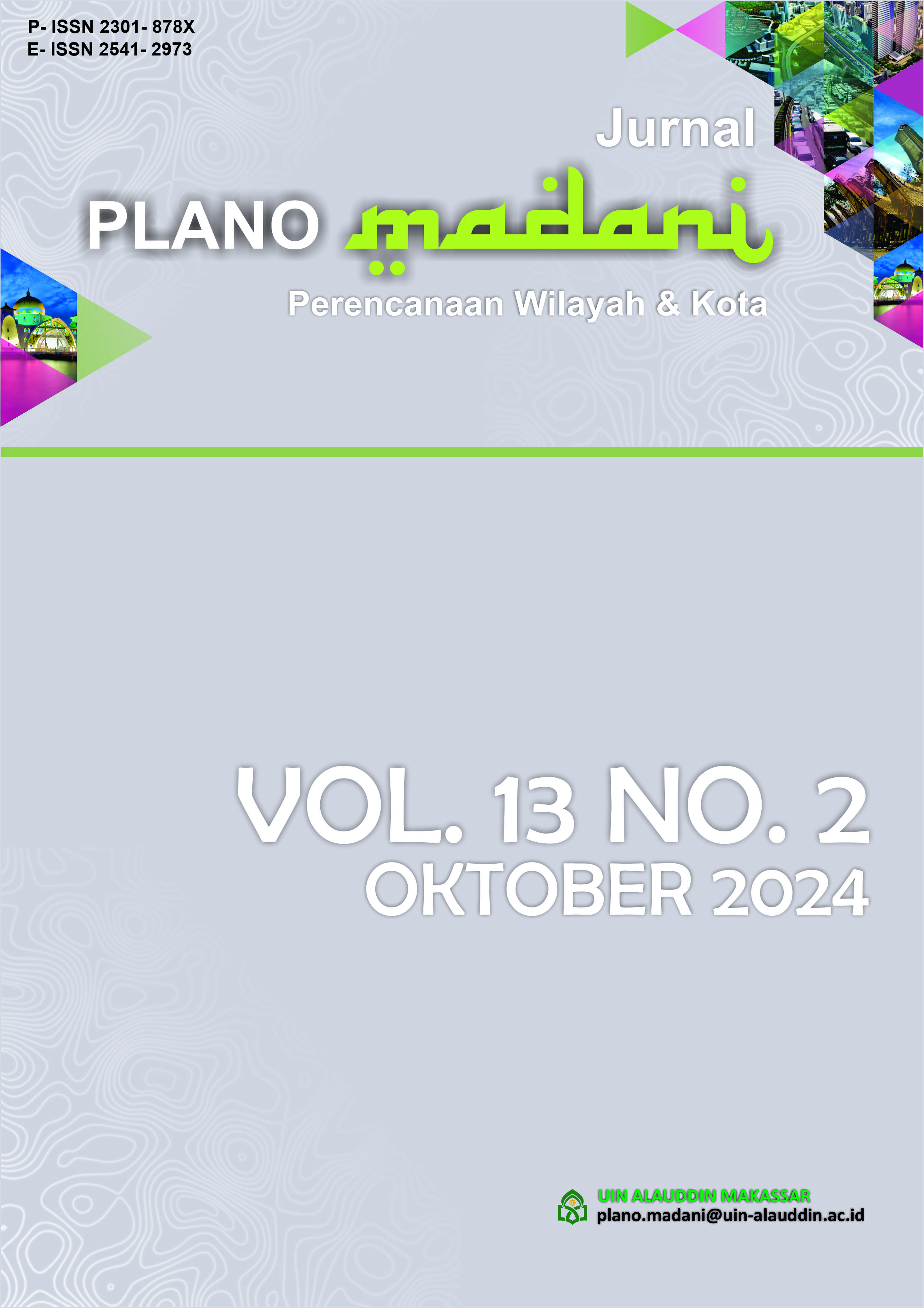PATTERNS OF SPACE UTILIZATION ACTIVITIES BY VULNERABLE GROUPS IN THE NGARSOPURO AREA
Abstract
A city and its region function efficiently and fairly with adequate availability of public open spaces. Surakarta City, as an "Inclusive City", strives to achieve the global goal of SDG 11 "Making cities and human settlements inclusive, safe, resilient, and sustainable." Accessibility issues in the city are still receiving attention, so the presence of vulnerable groups in public spaces cannot be fully independent due to concerns about safety or comfort. Article 5 paragraph (3) of the 1999 Act states that every person belonging to vulnerable groups is entitled to receive more protection regarding their particularities. The presence of vulnerable groups in the Ngarsopuro Area is prevalent, and they engage in various space utilization activities. Therefore, there is a need to identify the patterns of activities of vulnerable groups in the Ngarsopuro Area to understand the criteria for inclusive spaces for vulnerable groups. This research uses a descriptive-qualitative method with a behavior mapping theory approach. Data collection is done through observation, interviews, and documentation of activities of vulnerable groups in the Ngarsopuro Area, conducted during weekdays and holidays in the morning and afternoon. Data analysis in this research uses a place-centered mapping approach. The results of the research found that the pattern of space utilization activities in the morning groups in shaded and lush areas, either indoors or under trees. Meanwhile, in the evening, vulnerable groups gather in well-lit areas with entertainment options. At night, the utilization of space by vulnerable groups is closely related to security factors, which are the most important aspect for vulnerable groups to use or leave a space.
Downloads
References
Akkar, Z. M. (2005). Questioning “Inclusivity” Of Public Space In Post-Industrial Cities: The Case Of Haymarket Bus Station, Newcastle Upon Tyne.
Kota Surakarta. (2022). RPJPD Kota Surakarta 2005-2025. Peraturan Daerah Kota Surakarta Tentang Perubahan Atas Peraturan Derah Kota Surakarta Nomor 2 Tahun 2010 Tentang Rencana Pembangunan Jangka Panjang Daerah Kota Surakarta Tahun 2005-2025.
Li, J., Dang, A., & Song, Y. (2022). Defining the ideal public space: A perspective from the publicness. Journal of Urban Management, 11(4), 479–487. https://doi.org/10.1016/j.jum.2022.08.005.
Maftuhin, A. (2017). MENDEFINISIKAN KOTA INKLUSIF: ASAL-USUL, TEORI DAN INDIKATOR. TATALOKA, 19(2), 93. https://doi.org/10.14710/tataloka.19.2.93-103.
Mehta, V. (2014). Evaluating Public Space. Journal of Urban Design, 19, 53–88. http://dx.doi.org/10.1080/13574809.2013.854698.
UN HABITAT. (2001) Inclusive Cities Initiative – The Way Forward. Nairobi.
Sallis, J.F., Owen,N., Fisher,E.B., 2008.Ecological models of health behavior.In: Glanz, K.,Rimer,B.,Viswanath,K.(Eds.),Health Behavior and Health Education: Theory, Research, and Practice, fourthed. Jossey-Bass,San Francisco,CA, pp. 465–482.
McCormack, G.R., Rock,M., Toohey, A.M., Hignell,D., 2010.Characteristics of urban parks associated with park use and physical activity:are view of qualitative research. HealthPlace16,712–726.
Kaczynski, A.T., Henderson, K.A., 2007. Environmental correlates of physical activity:are view of evidence about parks and recreation. Leisure Sci.29, 315–354.
Copyright (c) 2024 Laelly Nadhira Sindy Ashari, Deva Fosterharoldas Swasto

This work is licensed under a Creative Commons Attribution-NonCommercial-ShareAlike 4.0 International License.
By Submitting your manuscript to our journal, your are following Copyright & License

